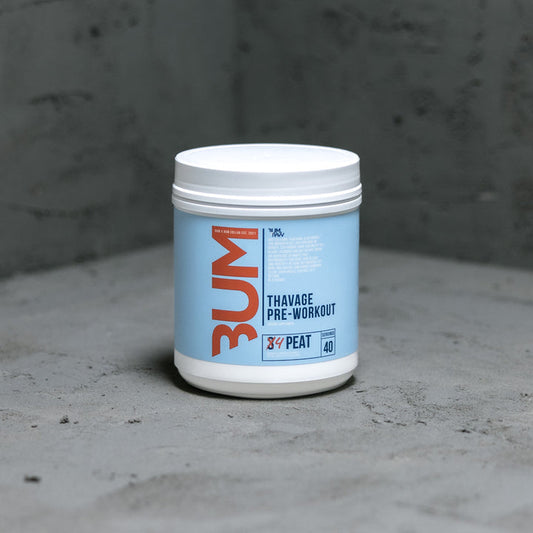The dumbbell overhead tricep extension is an excellent exercise for targeting and isolating the triceps muscles. When performed correctly, it can lead to significant triceps hypertrophy and strength gains. However, improper form during this exercise can reduce its effectiveness and lead to injury over time. In this comprehensive guide, we will cover the proper form and technique for the dumbbell overhead tricep extension to help you get the most out of this great movement.
Proper Setup
To begin, select an appropriate weight dumbbell in each hand. The weight should be challenging enough that you reach muscle fatigue in the 10-15 rep range. Start lighter if you are new to the movement. Grip the dumbbells firmly with an overhand grip and stand holding the dumbbells overhead. Your arms should be straight and in line with your ears. Set your feet about shoulder-width apart and maintain a slight bend in the knees. Engage your core by pulling your belly button in towards your spine. This provides stability in the torso during the movement. Keep your shoulders pulled down and avoid shrugging or raising them up towards your ears.
The Starting Position
As you hold the starting position, focus on keeping the biceps by your ears and your forearms angled back slightly behind your arms. Do not allow the dumbbells to drift too far forward as this will put stress on the shoulders and reduce triceps activation. Maintain full elbow extension and keep your wrists straight and rigid. Your palms should face forward. Resist allowing the dumbbells to drift inwards towards centerline. Keep them positioned directly out to the sides. This starting position lines up the movement for maximum triceps targeting.
The Downward Motion
To perform the exercise, initiate the movement by bending solely at the elbow while maintaining full elbow extension. Lower the dumbbells in a controlled, steady motion by allowing your forearms to hinge back behind your upper arms. Maintain your straight and rigid wrist position throughout the downward motion. Do not sway your torso or lean forward. Continue lowering the dumbbells until they nearly touch your lats while keeping your upper arms stationary and in line with your ears. This emphasizes an extreme stretch in the triceps.
The Upward Motion
After a brief pause at peak stretch, engage your triceps to drive the weights straight back up overhead to the starting position. Focus on keeping your elbows tight and fixed to your sides for maximum triceps isolation. Avoid flaring the elbows out or utilizing momentum to swing the weights up. Perform the lifting motion in a slow, controlled manner using triceps strength alone. Lock the arms out fully overhead into the starting position before beginning the next rep.
Breathing and Rep Speed
Proper breathing enhances muscular contraction and oxygen delivery on each rep. Inhale slowly through the nose on the downward motion. Hold your breath briefly at peak contraction at the bottom. Exhale controlled through the mouth as you drive the dumbbells upward through the most difficult portion of the lift. Do not hold your breath during the upward, exertion phase. Repeat for the desired number of repetitions. Perform reps steadily without jerking or rapid motions. Take approximately 1-2 seconds for both the lowering and lifting phases. Do not bounce or rebound at the bottom.
Triceps Emphasis
To keep maximal tension on the triceps throughout the movement, avoid the elbows drifting too far forward on the downward motion. Imagine pressing your elbows back into an imaginary wall behind you. On the upward motion, focus on keeping your elbows tight and fixed. Do not allow them to flare out to the sides. Isolate the triceps contraction by eliminating momentum and strict form. Stop the dumbbells 1-2 inches shy of full elbow lockout to keep tension on the triceps at the top.
Full Range of Motion
To optimize muscle building, take each rep through the complete range of motion. Lower until your forearms touch your lats at the bottom. This deep stretch elicits maximum triceps activation. Drive the dumbbells up until your arms are fully straightened overhead. Although you don't have to lock the elbows out hard, do straighten them fully. Partial reps do not provide full muscular stimulation. Control each portion of the movement for maximum benefits.
Posture and Alignment
Maintaining proper spinal alignment and posture is key for safety and effectiveness. Keep your chest lifted, spine neutral in its natural arch, and refrain from rounding your back. Do not carm your neck forward. Maintain your gaze forward or slightly upwards to keep your head in line with your spine. Tighten your core muscles to provide stability during the motions. Do not sway, twist, or contort your body. Maintain strict technique and controlled form on each rep.
Tempo, Volume and Frequency
Perform 2-4 sets of 8-15 repetitions with this exercise. Use a weight that fatigues your muscles within this rep range. Allow 60-90 seconds of rest between sets. Focus on quality contractions rather than rapid speed. Count 2-3 seconds on the downward motion and 1-2 seconds as you lift the weight. Train triceps 1-2 times per week on non-consecutive days for optimal recovery. Increase weights and volume gradually over time to promote continued progression.
Common Form Mistakes
Improper form is common and can inhibit gains as well as lead to injury. Here are some mistakes to avoid:
- Allowing elbows to flare outward instead of pressing straight back
- Leaning forward or arching backward instead of keeping upright posture
- Overextending elbow lockout at top to compensate for too much weight
- Letting shoulders round forward and shrug up toward ears
- Not going through full range of motion on each rep
- Using momentum instead of controlled form to lift the weights
- Failing to keep elbows fixed at your sides throughout motion
- Allowing wrists to bend or elbows to drift too far forward
By minimizing these form errors, you can maximize your triceps development and safely progress over time. Always use good technique for best results.
Adding Weights Over Time
As you become proficient with proper form, progressively increase the weights. This provides your triceps with greater overload to spur new growth. Aim to add 2.5-5 lb per dumbbell each week if possible. Alternatively, perform an additional 1-2 reps with the same weight. Plateaus are normal. Switch between heavier weights and higher reps to keep gaining strength and size. Monitor your body and reduce weights if form breaks down.
Complementary Exercises
For balanced triceps development, incorporate a variety of movements. Close grip bench presses, skull crushers, cable press downs, and leaning triceps extensions are excellent complementary exercises. Train through a full spectrum of motions to hit all three tricep heads. Incorporate both free weights and machines for variation. Aim for 2-3 tricep exercises per session, 8-12 sets total divided by muscle group.
The dumbbell overhead tricep extension ranks among the most effective isolating exercises for building bigger, stronger triceps. By adhering to proper form, you can reap all of its benefits safely and efficiently. Over time, your triceps will fill out your shirt sleeves and give you that powerful, chiseled look. Just remember to use good form, full range of motion, and progressive overload as you maximize your growth.




